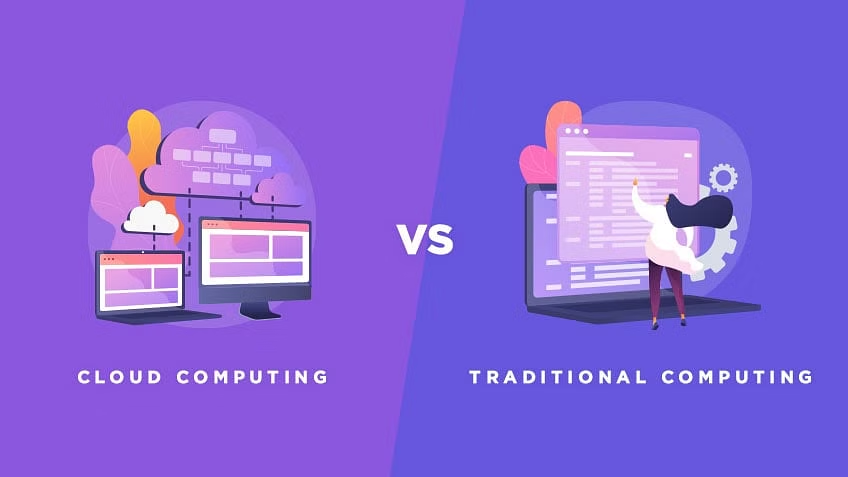Traditional Computing vs. Cloud Computing
 Pooja Raut
Pooja Raut
Why Cloud Computing? ☁️
Before cloud computing became mainstream, businesses had to rely on traditional infrastructure to host websites and applications. But setting up and maintaining servers was costly, complex, and inefficient. Let’s take a look at why traditional infrastructure had so many challenges.
The Challenges of Traditional Infrastructure
1️⃣ Buying and Setting Up a Server
Businesses had to purchase physical servers, often costing ₹50,000 or more.
These servers needed a dedicated, air-conditioned space to prevent overheating.
Power supply failures or hardware issues could cause downtime, leading to poor user experience.
2️⃣ High Maintenance Costs
Continuous power supply and cooling systems were a must.
IT professionals were needed to handle hardware failures, software updates, and security issues.
Regular maintenance added to operational costs.
3️⃣ Over-Provisioning or Under-Provisioning
If a business expected 10,000 users but only got 100, most of the server’s capacity was wasted.
If the number of users exceeded the server's limit, it crashed, leading to downtime.
Scaling up or down was complicated, requiring extra hardware purchases or manual configuration.
How Cloud Computing Changed Everything
Cloud computing eliminated these problems by offering flexible, scalable, and cost-effective solutions. Here’s how:
1️⃣ Pay Only for What You Use
Need a server for a few hours? No problem. Cloud providers charge per hour or even per second.
No upfront investments—just pay for the resources you actually use.
2️⃣ Automatic Scaling
If your website has 100 users today but suddenly reaches 1 million tomorrow, cloud servers automatically scale up to handle the load.
When traffic drops, resources scale down, ensuring cost efficiency.
3️⃣ No Maintenance Hassles
The cloud provider manages hardware, cooling, and security.
No need to worry about power failures or system crashes.
4️⃣ Global Access & High Availability
Cloud services are accessible from anywhere with an internet connection.
Data is stored in multiple locations to ensure uptime and reliability.
Cloud Computing in Everyday Life
Even if you’re not managing servers, you’re already using cloud computing every day:
Google Drive – Stores your files online instead of your local computer.
Spotify & Netflix – Stream music and movies without downloading files.
Gmail & Outlook – Send and receive emails without setting up your own mail server.
Why Businesses Love Cloud Computing
💰 Cost Savings – No need to buy expensive hardware; just pay for what you use.
📈 Scalability – Handle sudden spikes in traffic automatically.
🛠 Focus on Innovation – Instead of managing infrastructure, businesses can focus on building better products.
Example: E-Commerce Website During Festive Sales
Imagine an e-commerce site running a Diwali sale.
Normally, the site has 5,000 daily visitors. But during the sale, it gets 500,000 visitors in one day.
Cloud computing ensures servers automatically scale up to handle traffic, preventing crashes.
Once the sale ends, the resources scale down to save costs.
My Experience with Cloud Computing
When I started working with AWS, I realized how much easier cloud computing makes things. Hosting a website, setting up databases, and managing security—all of it is streamlined. I use AWS services like S3 for storage, EC2 for virtual servers, and CloudFront for content delivery, which helps me focus on creating rather than worrying about infrastructure.
In my upcoming blogs, I’ll dive deeper into AWS services and how you can get started with cloud computing. Stay tuned! 🚀
Happy Coding !! 🌻
Subscribe to my newsletter
Read articles from Pooja Raut directly inside your inbox. Subscribe to the newsletter, and don't miss out.
Written by

Pooja Raut
Pooja Raut
👨💻 BE Student | Enthusiastic about DevOps and Full-Stack Development | Passionate about Technology and Innovation | Exploring the world of development and operations to create seamless software solutions.